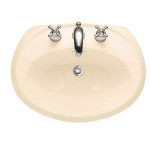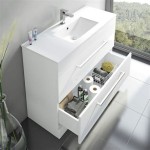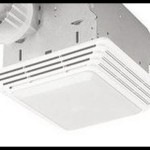How To Remove A Kohler Bathroom Faucet Aerator
Kohler bathroom faucets are known for their quality and durability. A crucial component contributing to their smooth operation is the aerator. This small, often overlooked part, mixes air with water, creating a softer, splash-free stream while conserving water. Over time, mineral deposits and debris can accumulate in the aerator, restricting water flow and potentially impacting water pressure. Removing and cleaning the aerator is a simple yet effective maintenance task that can restore optimal faucet performance.
Before initiating the removal process, gather the necessary tools. Typically, only a few items are required: a soft cloth, pliers, and possibly a small flathead screwdriver or a specialized aerator removal tool. The specific tool needed may vary depending on the aerator design. Kohler often includes an aerator key with new faucets. If this key is misplaced, alternatives like pliers or a small flathead screwdriver can usually suffice. If unsure about the correct removal method, consulting the faucet's installation manual or contacting Kohler customer support is recommended.
Turning off the water supply is the first and most crucial step. Locate the shutoff valves under the sink. These valves control the hot and cold water supply to the faucet. Turn both valves clockwise until they stop, preventing water flow to the faucet. Once the valves are closed, briefly turn on the faucet handles to release any remaining water pressure in the lines. This precaution prevents water from spraying out when the aerator is removed.
Protecting the faucet finish during the removal process is essential. Wrapping the jaws of the pliers or aerator key with a soft cloth can prevent scratches and potential damage to the chrome or other finish of the faucet. This cushioning layer ensures that the tool grips the aerator firmly without marring the surface. Take care to apply even pressure to avoid slippage.
Now, the aerator can be carefully removed. If using an aerator key, insert it into the notches on the aerator and turn counterclockwise to loosen. If using pliers, grip the aerator firmly but gently, using the cloth as protection, and turn counterclockwise. Some aerators are recessed or hidden, requiring a small flathead screwdriver to pry them loose. Exercise caution during this step to avoid damaging the aerator or the faucet. If the aerator feels stuck, do not force it. Soaking the aerator with vinegar can help dissolve mineral buildup and facilitate removal.
Once the aerator is detached, inspect it for any debris or mineral deposits. Often, a simple rinse under running water is sufficient to clear minor blockages. For more stubborn deposits, soaking the aerator in a solution of white vinegar and water for a few hours can be highly effective. Avoid using harsh chemicals or abrasive cleaning agents, as these can damage the aerator's finish and internal components.
After cleaning, reassemble the aerator by hand, ensuring all components are correctly aligned. Tighten the aerator by turning it clockwise, either by hand or using the aerator key or pliers (with a cloth for protection). Avoid overtightening, as this can damage the aerator or the faucet threads. A snug fit is sufficient to ensure a watertight seal.
With the aerator reattached, the water supply can be restored. Turn the shutoff valves counterclockwise to reopen the water flow. Initially, turn the valves slowly to prevent any sudden pressure surges. Observe the faucet for leaks. If any leaks are detected, slightly tighten the aerator or repeat the removal and reinstallation process, ensuring a proper seal.
Regular cleaning of the aerator, ideally every few months, can prevent significant buildup and maintain optimal water flow. This simple maintenance task extends the lifespan of the faucet and ensures efficient water usage. By understanding the process and taking necessary precautions, removing and cleaning a Kohler bathroom faucet aerator is a straightforward task that any homeowner can accomplish.
Different Kohler faucet models might have variations in their aerator designs. Always refer to the specific instructions provided with the faucet for detailed guidance. If encountering any difficulties during the removal or reinstallation process, seeking professional plumbing assistance is advisable. This preventative maintenance measure ensures the continued efficiency and longevity of the Kohler bathroom faucet.
Understanding the different types of aerators used in Kohler faucets can also be beneficial. Some models utilize a "cache" aerator that hides the aerator within the faucet spout for a streamlined look. Other models feature adjustable aerators that allow for customization of the water stream. Familiarizing oneself with the specific aerator type can simplify the removal and cleaning process.
When reassembling the aerator, pay close attention to the order of the internal components. These parts, often including screens and flow restrictors, are essential for proper aerator function. Ensure they are correctly positioned before tightening the aerator onto the faucet spout. This meticulous approach guarantees optimal water flow and prevents potential issues.

Low Flow Faucet Aerator
Remove The Aerator For Simplice Pull Down Faucet
Remove The Aerator For Simplice Pull Down Faucet

How To Replace A Faucet Aerator Repair And
How To Remove An Aerator From A Moen Faucet Quora
Katun Faucet Stream Breaker Removal

Replacing A Faucet Aerator
Maxton Faucet Stream Breaker Removal

Danco Multi Use Faucet Aerator Key Tool For Removal 10909 The Home Depot

How To Clean Remove A Kitchen Faucet Aerator
Related Posts







